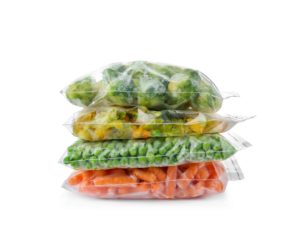Recently, RTS released the Food Waste in America Guide for 2021, taking a deep dive into the 80 billion pounds of food waste discarded every year and the estimated 50 million people experiencing food insecurity within the US. What is clear is that the scale of our food waste is a massive issue, one that has been exacerbated by global events.
2021 has been another year dominated by the COVID-19 pandemic, and while few people need reminding of its devastating impact, the way in which it has changed our lives on an everyday basis is worth highlighting—especially in the context of food waste.
Over the past 18 months, more people than ever before have been working remotely or confined to their homes. In fact, some estimates suggest that 42% were working from home in 2020, with another 33% not working at all and self-quarantining.
Students of all ages have switched to online study and daily exercise has been taken in or near home for many. TV and movie streaming grew more than 44% in the final quarter of 2020, while social media usage rose significantly.
Combined, these factors mean that a significant portion of people are now preparing and eating meals at home or ordering food for delivery—either from grocery stores, as meal kits, or takeout. Simply put, this means more residential food waste has been generated over the past 18 months than ever before, while less has been generated in offices, restaurants, and other public places.
While food is still wasted across the entire supply chain, residential generation has long been recognized as the biggest source, with ReFED estimating 37.2% of waste was created at a residential level in 2019. This figure is likely to be significantly higher in 2020 and 2021, and while many are looking to the second half of 2021 to offer some respite from the “new normal”, it is likely that home working, in particular, is here to stay.
Dealing with food waste on a residential level poses numerous challenges for both consumers and municipalities. Home composting is one of many ways to manage food waste, while technology has developed to connect consumers through smartphones and make donating edible food waste easier and more accessible. However, the vast majority ends up in landfill and curbside organics collections still leave a lot to be desired across the US.
Everyone can waste less food by following the food waste recovery hierarchy featured in the recent guide. Buy less and reduce waste at the source by eating leftovers; donate food to friends, family, or those in need; feed pets and other domestic animals you may care for; set up a compost bin in your garden or try indoor composting techniques such as vermiculture and bokashi. Finally, wherever possible, avoid throwing food waste and organics in your trash.
For businesses looking to reduce food waste, contact our TRUE Advisors to discuss how you can implement efficient strategies and how on-demand and recurring organics collections can help you donate and compost transparently.
Read the guide today and discover the scale of the problem and how it can improve.



